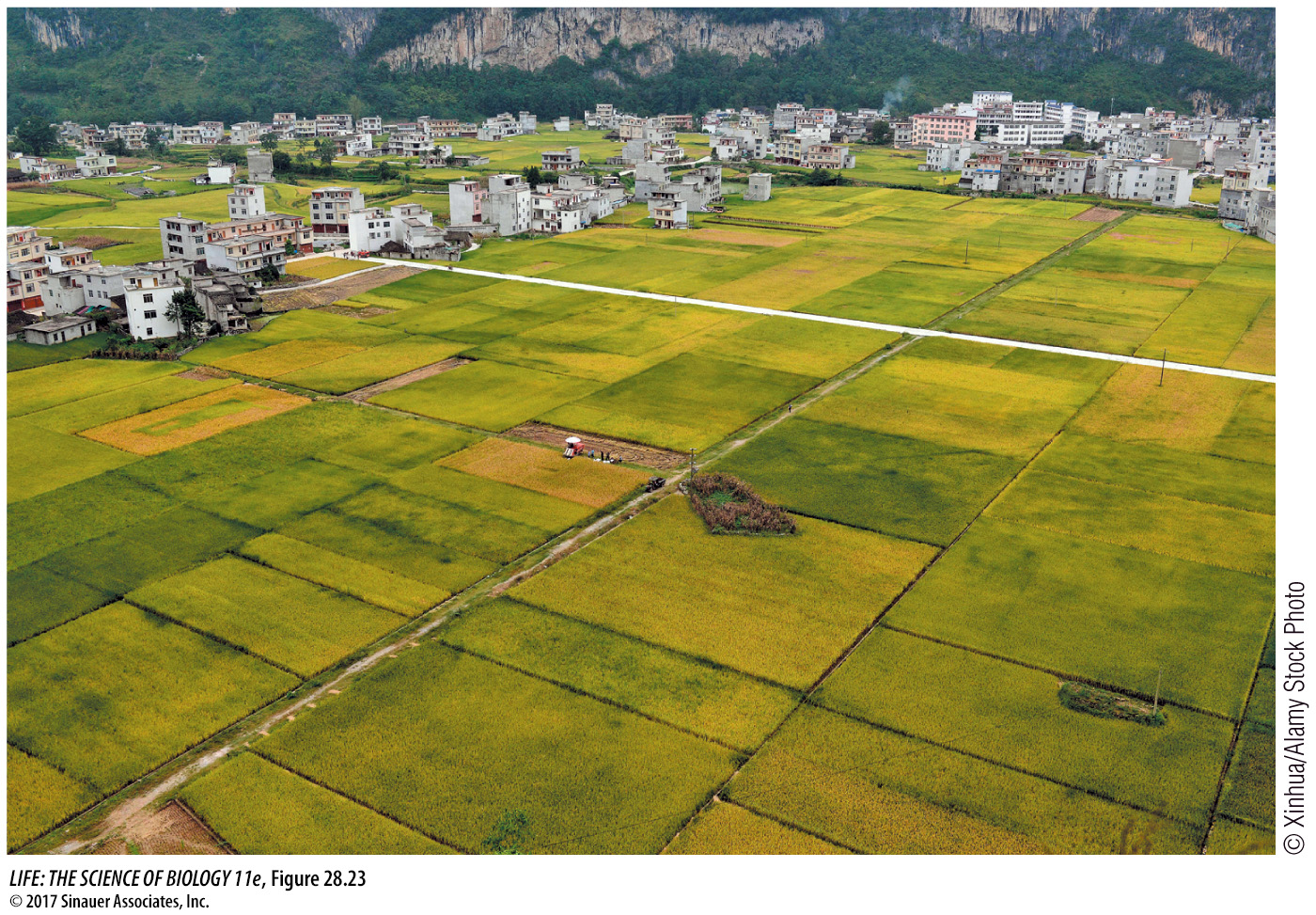Seed plants are our primary food source
Plants are primary producers. They trap energy and carbon by means of photosynthesis, making those resources available not only for their own needs, but also for the herbivores and omnivores that consume them, for the carnivores and omnivores that eat the herbivores, and for the prokaryotes and fungi that complete food webs. The earliest steps in human civilization involved cultivating angiosperms to provide a reliable food supply.
Today, twelve species of seed plants account for most of the food eaten by humans: rice, coconut, wheat, corn (maize), potato, sweet potato, cassava (also called tapioca or manioc), sugarcane, sugar beet, soybean, common bean (Phaseolus vulgaris), and banana. Hundreds of other seed plants are cultivated for food, but none rank with these twelve in importance. Indeed, more than half of the world’s human population derives the bulk of its food energy from the seeds of a single plant, Oryza sativa, better known as rice. Rice is particularly important in eastern Asia, where it has been cultivated for more than 8,000 years (Figure 28.23).

In addition to providing food directly for human consumption, plants also provide feed for agricultural production of animals. In particular, the grasses that grow in the world’s rangelands are the primary forage for the grazing animals that humans use for meat and dairy products.